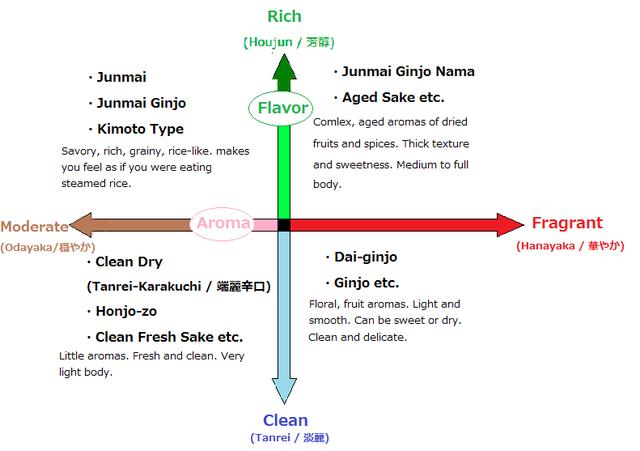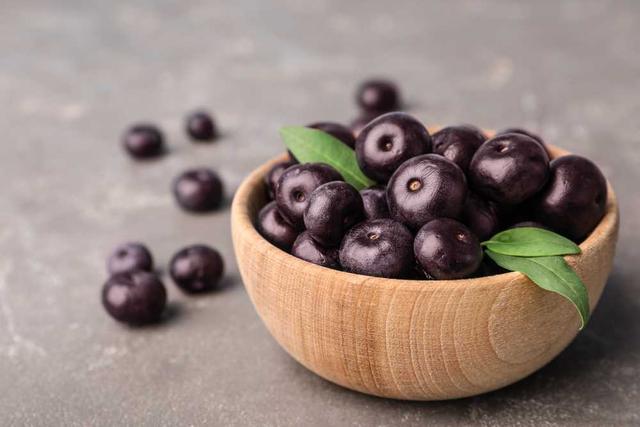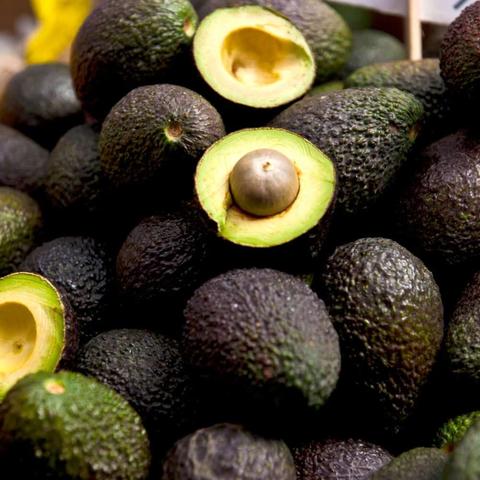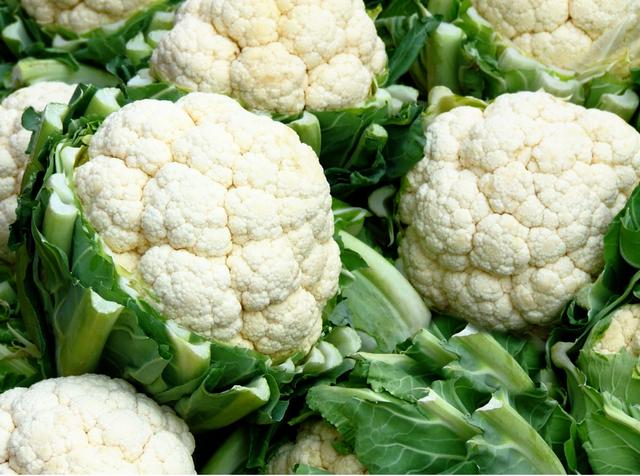
“Discover the Delightful Flavors of Brie: A Guide to Understanding its Unique Taste Profile. Uncover the creamy, buttery, and slightly tangy notes that make brie cheese a beloved delicacy worldwide. Indulge in this smooth and velvety cheese, perfect for pairing with fruits, crackers, or even wine. Get ready to embark on a culinary journey filled with sophistication and rich flavors.”
1. Exploring the Unique Taste of Brie Cheese: A Gastronomic Delight
Brie cheese, with its soft and creamy texture, is a French delicacy that has charmed food enthusiasts worldwide. Crafted from high-quality cow’s milk, Brie owes its distinctive flavor and texture to the lactic fermentation process. It has a rich and buttery taste with a mild, creamy flavor. The texture is soft and smooth, often described as melt-in-your-mouth. As Brie cheese ages, it develops a stronger flavor with earthy and nutty undertones. The rind of Brie adds a slightly tangy and mushroom-like flavor to the overall taste experience.
Different Types Of Brie and Their Taste
There are different types of Brie available, each offering its own unique taste experience. Triple Crème Brie has a higher fat content, making it creamier than regular Brie. It has a mild, buttery flavor that intensifies as it ages. Brie de Meaux is known for its earthy and nutty flavor, often with a slightly fruity undertone. Some variations of Brie come coated with herbs such as dill or garlic, adding an extra layer of flavor to the cheese. Brie Noir has a distinctive earthy flavor with hints of minerals from the ash coating. Brie de Melun is known for its robust flavor profile with musky and spicy notes.
Tips for Selecting the Best Brie
When selecting Brie cheese, gently press it to check its texture – it should have slight resistance on the outside but feel soft and supple on the inside. Give it a sniff – it should have a pleasant, slightly earthy aroma. Look for creamy white rind without cracks or mold. The interior should be soft and slightly oozy near the center. Consider the intended use of the Brie – creamy and mild varieties are great for enjoying on their own or with light accompaniments, while stronger Brie pairs well with bold flavors.
Pairing Brie Cheese with Delicious Accompaniments
Brie cheese is incredibly versatile and pairs well with a variety of accompaniments. Serve it with ripe fruits like grapes or apples to complement its creamy and slightly tangy taste. Enjoy it with crispy crackers or slices of crusty bread for a delightful contrast in textures. Toasted nuts like walnuts or almonds enhance the overall taste experience with their crunchiness and nutty flavors. Drizzle some honey over the Brie for a touch of sweetness, or create a charcuterie board by pairing it with cured meats like prosciutto or salami. Fruit jams, fig preserves, or chutneys can also be spread next to the Brie for a balance of sweet or tangy flavors. Garnish Brie with fresh herbs like thyme or basil to bring a delightful freshness to the cheese. Pair your Brie with a glass of wine, such as Chardonnay or Pinot Noir, for a complete gastronomic experience.
Overall, Brie cheese offers a unique taste experience that ranges from creamy and mild to rich and complex. With its versatility and ability to pair well with various accompaniments, Brie is truly a gastronomic delight that will satisfy any cheese lover’s palate.
2. Unveiling the Flavor Profile of Brie Cheese: Creamy, Buttery, and More
Brie cheese is renowned for its unique flavor profile that combines creamy and buttery notes with a mild, yet distinctive taste. The soft and smooth texture of Brie adds to its appeal, making it a favorite among cheese enthusiasts worldwide.
One of the key characteristics of Brie cheese is its rich and buttery taste. The high-quality cow’s milk used in its production contributes to this indulgent flavor. When you take a bite of Brie, you can expect a creamy and luscious experience that melts in your mouth.
As Brie ages, it develops more complex flavors. The cheese becomes stronger in taste, with earthy and nutty undertones. This aging process enhances the overall flavor profile of Brie, making it even more enticing for those who enjoy bold and robust cheeses.
The rind of Brie also adds to its flavor experience. It has a slightly tangy and mushroom-like taste that complements the creamy interior. This combination of flavors creates a harmonious balance that sets Brie apart from other cheeses.
When exploring different types of Brie cheese, you’ll discover variations in taste profiles. For example, Triple Crème Brie is known for its extra creaminess and decadent flavor. Brie de Meaux offers an earthy and nutty taste with fruity undertones. Other varieties may be coated with herbs or have ash coatings, adding additional layers of flavor to the cheese.
To fully appreciate the flavor profile of Brie cheese, it’s important to choose the right one for your palate. When selecting Brie, look for a cheese that has a soft and supple texture on the inside while having a slight resistance on the outside. A pleasant, slightly earthy aroma is also indicative of good quality Brie.
Pairing accompaniments can further enhance the flavor of Brie cheese. Slices of ripe fruits like grapes, apples, or berries complement the creamy and tangy taste. Crispy crackers or crusty baguette provide a delightful contrast in texture. Toasted nuts add crunchiness and nutty flavors that enhance the overall experience.
In conclusion, Brie cheese offers a unique flavor profile that combines creamy and buttery notes with mild, yet distinctive taste. As it ages, Brie develops more complex flavors with earthy and nutty undertones. The rind adds a slightly tangy and mushroom-like taste to the overall experience. With different types of Brie available, each offering its own taste variations, there is something for every cheese lover to explore and enjoy.
3. Why Brie Cheese is a Masterpiece of Flavor and Texture
Brie cheese is often regarded as a masterpiece of flavor and texture due to its unique characteristics. Its rich and buttery taste, combined with a mild and creamy flavor, creates a delightful experience for the palate. The soft and smooth texture of Brie, often described as melt-in-your-mouth, adds to its appeal. As the cheese ages, it develops a stronger flavor with earthy and nutty undertones, making it even more complex.
One of the reasons why Brie cheese is considered a masterpiece is its traditional lactic fermentation process. This time-honored technique contributes to the distinct flavor and texture of the cheese. Crafted exclusively from high-quality cow’s milk, Brie has a rich French heritage that adds to its allure.
Another aspect that sets Brie apart is its versatility. With different types available, each offering its own taste profile, there is something for every cheese lover to enjoy. From creamy and mild variations like Triple Crème Brie to robust options like Brie de Melun with musky and spicy notes, exploring the different types allows you to discover your preferred flavor profile.
In addition to its exquisite taste and texture, Brie cheese also offers a visually appealing experience. The creamy interior contrasts beautifully with the white rind that encases it. Some variations of Brie even come coated with herbs or have a dark coating of charcoal or ash, adding an extra layer of visual interest.
Overall, Brie cheese can be considered a masterpiece due to its exceptional flavor profile, luxurious texture, traditional production methods, and visual appeal. Whether enjoyed on its own or paired with various accompaniments, Brie never fails to charm food enthusiasts worldwide with its culinary excellence.
4. Discovering the Rich and Decadent Taste of Brie Cheese
Brie cheese is renowned for its rich and decadent taste that has captivated food enthusiasts worldwide. Crafted exclusively from high-quality cow’s milk, Brie boasts a creamy texture that melts in your mouth, creating a truly indulgent experience. Its flavor is buttery and mild, with hints of creaminess that intensify as the cheese ages.
One of the unique aspects of Brie cheese is its ability to develop more complex flavors as it matures. As it ages, Brie develops earthy and nutty undertones that add depth to its already delicious taste. Additionally, the rind of Brie has a slightly tangy and mushroom-like flavor, which enhances the overall taste experience.
It’s important to note that there are different types of Brie available, each offering its own distinct taste profile. For example, Triple Crème Brie is made with extra cream, resulting in a rich and luxurious flavor with hints of sweetness. On the other hand, Brie de Meaux is known for its earthy and nutty flavor, while Brie Noir offers a unique contrast with its earthy taste complemented by minerals from the ash coating.
When selecting the best Brie for your palate, there are a few considerations to keep in mind. The texture should be soft and supple on the inside while having a slight resistance on the outside. A pleasant, slightly earthy aroma indicates freshness, while cracks or discoloration on the rind should be avoided. Different varieties offer varying levels of creaminess, so choose according to your preference.
To enhance the flavor of Brie cheese even further, consider pairing it with complementary accompaniments. Slices of ripe fruits like grapes or apples provide natural sweetness that complements the tanginess of the cheese. Crispy crackers or crusty baguette offer a delightful contrast in texture, while toasted nuts add crunchiness and nutty flavors. Drizzling honey over Brie adds a touch of sweetness, and serving it with cured meats creates a savory combination. Fruit jams or chutneys provide a balance of flavors, and fresh herbs bring a refreshing element to the cheese. Finally, pairing Brie with wine or sparkling cider completes the gastronomic experience.
In conclusion, Brie cheese is a culinary treasure that offers a rich and decadent taste like no other. Its creamy texture, buttery flavor, and complex undertones make it a favorite among cheese lovers worldwide. Whether enjoyed on its own or paired with complementary accompaniments, Brie is sure to delight your palate and elevate any cheese platter.
5. From Mild to Complex: Exploring the Different Tastes of Brie Cheese Varieties
Brie cheese comes in various varieties, each offering a unique taste experience. Here are some notable types:
1. Regular Brie:
Regular Brie cheese has a mild and buttery flavor that becomes more pronounced as it ages. It is known for its soft and smooth texture, often described as melt-in-your-mouth.
2. Triple Crème Brie:
Triple Crème Brie is made with extra cream, resulting in a rich and decadent flavor. It has a smooth, buttery texture and hints of sweetness.
3. Brie de Meaux:
Brie de Meaux is a protected designation of origin (PDO) cheese made exclusively in the Meaux region of France. It has an earthy and nutty flavor with a slightly fruity undertone. The texture can range from creamy to runny, making it perfect for spreading.
4. Herb-Coated Brie:
Some variations of Brie come coated with herbs such as dill, garlic, or basil. This adds an extra layer of flavor to the cheese, complementing its creamy texture perfectly.
5. Brie Noir:
Also known as “Black Brie,” this type of Brie stands out for its unique appearance due to the dark coating of charcoal or ash. It has a distinctive earthy flavor with hints of minerals from the ash, offering a delightful contrast to the creamy interior.
6. Brie de Melun:
Brie de Melun is known for its robust flavor profile, with a musky and spicy kick on the back of the tongue and a lingering finish. Many describe it as having a taste reminiscent of wet leaves in autumn.
Each type of Brie cheese offers a different taste experience, allowing cheese lovers to explore and discover their preferred flavor profile. Whether you prefer creamy and mild or rich and complex, there is a Brie variety for everyone.
6. Brie de Meaux and Beyond: Exploring the Diverse Flavors of Brie Cheese
Brie de Meaux is a renowned variety of Brie cheese that offers a unique and distinct flavor profile. Made exclusively in the Meaux region of France, this cheese is known for its earthy and nutty taste, often accompanied by a slightly fruity undertone. The texture of Brie de Meaux can range from creamy to runny, making it perfect for spreading on crackers or bread.
In addition to Brie de Meaux, there are several other variations of Brie cheese available, each with its own taste experience. Triple Crème Brie, for example, is made with extra cream, resulting in a rich and decadent flavor. It has a smooth and buttery texture, with hints of sweetness.
Some types of Brie come coated with herbs such as dill, garlic, or basil. This adds an extra layer of flavor to the cheese, complementing its creamy texture perfectly. Another unique variety is Brie Noir or “Black Brie,” which stands out due to its dark coating of charcoal or ash. This type of Brie has an earthy flavor with hints of minerals from the ash, providing a delightful contrast to the creamy interior.
Brie de Melun is another distinguished French variety known for its robust flavor profile. It has a musky and spicy kick on the back of the tongue and leaves a lingering finish. Many describe it as having a taste reminiscent of wet leaves in autumn.
Each type of Brie cheese offers a unique taste experience that allows cheese lovers to explore and discover their preferred flavor profiles. From creamy and mild to rich and complex, there is something for everyone when it comes to enjoying the diverse flavors of Brie cheese.
Here are some tips for selecting the best Brie cheese:
1. Gently press the cheese to check its texture. The best Brie should have a slight resistance on the outside but feel soft and supple on the inside.
2. Give the Brie a gentle sniff. It should have a pleasant, slightly earthy aroma. Overly pungent or ammonia-like odors are signs of an overly aged or spoiled cheese.
3. Look for a Brie cheese with a creamy, unblemished white rind. The rind should be free from cracks, mold, or discoloration.
4. The interior of the cheese should be soft and slightly oozy near the center. Different varieties of Brie offer varying levels of creaminess, so choose according to your preferences.
5. Always choose Brie from reputable cheese shops or producers to ensure quality ingredients and traditional production methods.
Exploring the diverse flavors of Brie cheese is a delightful journey that allows you to discover your personal favorite. Don’t hesitate to experiment with different varieties and pairings to enhance your cheese experience. Whether enjoyed on its own or accompanied by fruits, bread, nuts, honey, or even wine, Brie cheese is sure to delight your taste buds with its creamy and buttery flavors.
7. Choosing the Perfect Brie: A Guide to Selecting the Best Flavor Profile for Your Palate
When it comes to selecting the perfect Brie cheese for your palate, there are a few considerations that can elevate your cheese experience. Here’s a guide to help you make the best choice:
1. Texture:
Gently press the cheese to check its texture. The best Brie should have a slight resistance on the outside but feel soft and supple on the inside. Avoid Brie cheese that feels too hard or crumbly.
2. Aroma:
Give the Brie a gentle sniff. It should have a pleasant, slightly earthy aroma. Overly pungent or ammonia-like odors are signs of an overly aged or spoiled cheese.
3. Rind:
Look for a Brie cheese with a creamy, unblemished white rind. The rind should be free from cracks, mold, or discoloration.
4. Interior Texture:
The interior of the cheese should be soft and slightly oozy near the center. Different varieties of Brie offer varying levels of creaminess. If you prefer an indulgent, melt-in-your-mouth experience, opt for Double or Triple Crème Brie. For a firmer texture, go for Brie de Meaux or Brie de Melun.
5. Source:
Always choose Brie from reputable cheese shops or producers. This ensures that the cheese is made with quality ingredients, adheres to traditional production methods, and has been properly aged.
6. Intended Use:
Keep in mind the intended use of the Brie when making your selection. If you plan to enjoy it on its own or with light accompaniments, opt for a creamy and mild variety. For pairing with bold flavors, consider a stronger Brie like Brie de Meaux.
7. Experimentation:
Selecting the best Brie is a delightful journey of exploration. Don’t hesitate to experiment with different varieties to discover your personal favorite. You can even visit your local cheese shop and ask for recommendations.
By considering these factors, you can ensure that you select the perfect Brie cheese that suits your taste preferences and enhances your overall cheese experience.
8. Pairing Perfection: Delicious Accompaniments to Enhance the Taste of Brie Cheese

Brie cheese is a versatile and delicious cheese that pairs well with a variety of accompaniments. Here are some options to enhance the taste of Brie:
1. Ripe Fruits
Serve slices of ripe fruits like grapes, apples, pears, or berries alongside Brie. The natural sweetness of the fruits complements the creamy and slightly tangy taste of the cheese.
2. Crispy Crackers or Baguette
Enjoy Brie with crispy crackers or slices of crusty baguette. The crisp texture of the bread or crackers provides a delightful contrast to the soft and creamy Brie.
3. Toasted Nuts
Pair Brie cheese with toasted nuts like walnuts, almonds, or pecans. Their crunchiness and nutty flavors enhance the overall taste experience.
4. Honey
Drizzle some honey over the Brie for a touch of sweetness. The honey complements the mild flavors of the cheese and adds a luscious texture.
5. Cured Meats
Create a charcuterie board by serving Brie cheese with cured meats like prosciutto, salami, or smoked turkey. The salty and savory notes of the meats pair excellently with the creamy texture of the Brie.
6. Fruit Jams or Chutneys
Spread a dollop of fruit jams, fig preserves, or chutneys next to the Brie. The balance of flavors between the sweet or tangy condiments and the rich, creamy cheese creates a harmonious combination.
7. Fresh Herbs
Garnish Brie with fresh herbs like thyme, basil, or rosemary. The herbal aromas and flavors bring a delightful freshness to the cheese.
8. Wine or Sparkling Cider
Pair your Brie with a glass of wine, such as a crisp Chardonnay, Pinot Noir, or Champagne. Alternatively, opt for sparkling cider for a non-alcoholic alternative.
These accompaniments can enhance the flavor profile of Brie cheese and create a memorable taste experience. Experiment with different combinations to find your favorite pairing.
9. Baked Brie: A Gooey Delight with Savory or Sweet Toppings

Baked Brie is a delicious and indulgent treat that takes the already creamy and buttery flavors of Brie cheese to a whole new level. When baked, the cheese becomes warm and gooey, with a slightly melted texture that is incredibly satisfying to bite into.
What sets baked Brie apart is the addition of savory or sweet toppings that complement the rich flavors of the cheese. Some popular choices for toppings include herbs like rosemary or thyme, fruit preserves like fig or raspberry, or nuts like almonds or pecans. These toppings add an extra layer of flavor and texture to the already luxurious Brie.
When you take a bite of baked Brie, you’ll experience a delightful combination of creamy cheese and the chosen toppings. The warm, gooey interior of the cheese pairs perfectly with the savory or sweet elements on top, creating a harmonious blend of flavors. Whether you prefer a savory baked Brie with herbs and spices or a sweet version with fruit preserves and nuts, this dish is sure to please your taste buds.
To make baked Brie, simply place a wheel or wedge of Brie cheese on a baking sheet lined with parchment paper. Add your desired toppings on top of the cheese, then bake it in the oven until it becomes warm and gooey. The exact baking time will depend on the size of your cheese wheel and your desired level of meltiness.
Baked Brie makes for an impressive appetizer at dinner parties or gatherings, as it can be easily shared among guests. It can be served alongside crackers, bread slices, or even fresh fruits for dipping. The combination of warm, melty cheese and flavorful toppings is guaranteed to be a crowd-pleaser.
In conclusion, baked Brie is a gooey delight that takes the already delicious flavors of Brie cheese to new heights. Whether you prefer savory or sweet toppings, this dish offers a delightful combination of creamy cheese and complementary flavors. Give it a try at your next gathering and watch as your guests fall in love with this indulgent treat.
10. How to Properly Store Brie Cheese for Maximum Freshness and Flavor
When it comes to storing Brie cheese, proper handling is crucial to maintain its freshness and flavor. Here are some tips on how to store Brie cheese:
1. Wrap it tightly: After purchasing or opening a wheel of Brie, wrap it tightly in plastic or wax paper. This helps prevent air exposure, which can cause the cheese to dry out and lose its flavor.
2. Use an airtight container: Once wrapped, place the Brie in an airtight container or resealable bag. This further protects it from moisture and odors in the refrigerator.
3. Store at the right temperature: Keep your Brie cheese in the refrigerator at a temperature between 35°F to 45°F (1°C to 7°C). This range ensures that the cheese stays fresh without becoming too cold or warm.
4. Separate from strong-smelling foods: Brie cheese has a delicate flavor that can easily absorb odors from other foods in the fridge. To avoid this, store it separately from strong-smelling items like onions or garlic.
5. Avoid freezing: While some cheeses can be frozen for extended storage, Brie is not ideal for freezing. Freezing can alter its texture and affect its taste, resulting in a less enjoyable eating experience.
6. Check for spoilage signs: Before consuming your stored Brie cheese, always check for signs of spoilage such as mold growth, off smells, or changes in texture. If any of these are present, discard the cheese to avoid foodborne illnesses.
By following these storage guidelines, you can ensure that your Brie cheese remains fresh and flavorful for as long as possible. Enjoy its creamy goodness whenever you’re ready to indulge!
11. Indulge in the Creamy and Buttery Flavors of Brie Cheese: A Culinary Adventure
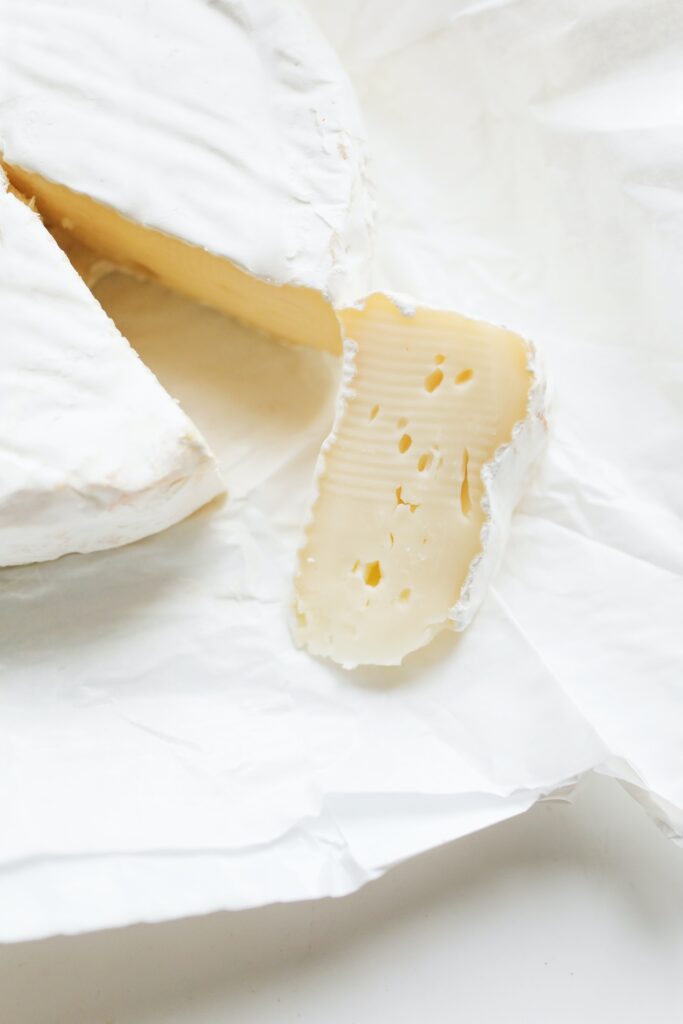
Brie cheese, with its soft and creamy texture, is a French delicacy that has charmed food enthusiasts worldwide. Crafted exclusively from high-quality cow’s milk, Brie owes its distinctive flavor and texture to the time-honored lactic fermentation process. It has a rich and buttery taste with a mild, creamy flavor. The texture is soft and smooth, often described as melt-in-your-mouth. As Brie cheese ages, it develops a stronger flavor and becomes more complex, with earthy and nutty undertones. The rind of Brie has a slightly tangy and mushroom-like flavor that adds to the overall taste experience.
Different types of Brie are available, each with its distinct taste. Triple Crème Brie has a higher fat content, making it creamier than regular brie. It has a mild, buttery flavor that intensifies as it ages. Brie de Meaux is known for its earthy and nutty flavor, often with a slightly fruity undertone. Some variations of Brie come coated with herbs such as dill, garlic, or basil, adding an extra layer of flavor to the cheese.
When selecting the finest Brie for your palate, consider factors such as texture, aroma, appearance, intended use, and source. The best Brie should have a slight resistance on the outside but feel soft and supple on the inside. It should have a pleasant, slightly earthy aroma without being overly pungent or ammonia-like. Look for a creamy white rind that is free from cracks or mold. Consider the level of creaminess you prefer and choose accordingly.
Brie cheese pairs well with various accompaniments to enhance its flavors. Serve it with ripe fruits like grapes or apples for added sweetness. Enjoy it with crispy crackers or slices of crusty baguette for a delightful contrast in texture. Pair Brie cheese with toasted nuts like walnuts or almonds to enhance the overall taste experience. Drizzle honey over the Brie for a touch of sweetness, or create a charcuterie board by serving it with cured meats like prosciutto or salami. Spread fruit jams, fig preserves, or chutneys next to the Brie for a balance of flavors. Garnish Brie with fresh herbs like thyme or basil to bring freshness to the cheese. Finally, pair your Brie with a glass of wine such as Chardonnay or Champagne.
Baked Brie has a rich, creamy interior with a slightly melted texture. It often features a savory or sweet topping, like herbs, fruit preserves, or nuts, which add complementary flavors. To store Brie cheese properly, wrap it tightly in plastic or wax paper and place it in an airtight container or resealable bag in the refrigerator at a temperature between 35°F to 45°F (1°C to 7°C).
Indulge in the creamy and buttery flavors of Brie cheese and embark on this culinary adventure that offers a taste experience like no other. Whether enjoyed on its own or paired with various accompaniments, Brie is sure to delight your palate and leave you craving more of its exquisite flavors.
In conclusion, Brie cheese can be described as creamy with a slight tang and nutty flavor. Its soft texture and rich taste make it a versatile choice for both snacking and cooking. Whether enjoyed on its own or paired with fruits and breads, Brie offers a delightful experience for cheese lovers.
Learn More About Grilling
If you want to learn more about grilling, check out these other helpful resources!

